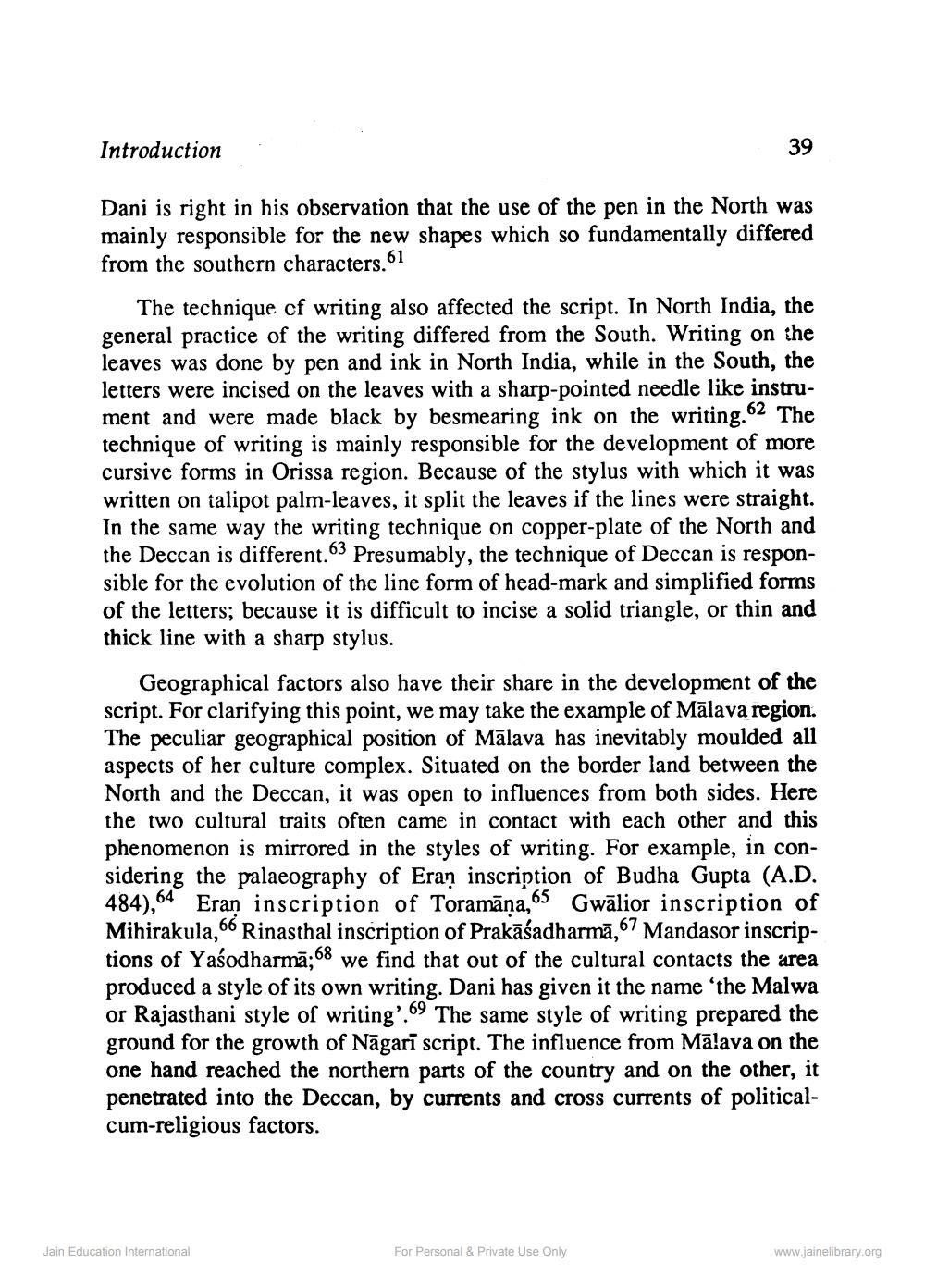________________
Introduction
Dani is right in his observation that the use of the pen in the North was mainly responsible for the new shapes which so fundamentally differed from the southern characters.61
39
The technique of writing also affected the script. In North India, the general practice of the writing differed from the South. Writing on the leaves was done by pen and ink in North India, while in the South, the letters were incised on the leaves with a sharp-pointed needle like instrument and were made black by besmearing ink on the writing.62 The technique of writing is mainly responsible for the development of more cursive forms in Orissa region. Because of the stylus with which it was written on talipot palm-leaves, it split the leaves if the lines were straight. In the same way the writing technique on copper-plate of the North and the Deccan is different. 63 Presumably, the technique of Deccan is responsible for the evolution of the line form of head-mark and simplified forms of the letters; because it is difficult to incise a solid triangle, or thin and thick line with a sharp stylus.
Geographical factors also have their share in the development of the script. For clarifying this point, we may take the example of Malava region. The peculiar geographical position of Mālava has inevitably moulded all aspects of her culture complex. Situated on the border land between the North and the Deccan, it was open to influences from both sides. Here the two cultural traits often came in contact with each other and this phenomenon is mirrored in the styles of writing. For example, in considering the palaeography of Eran inscription of Budha Gupta (A.D. 484),64 Eran inscription of Toramāṇa, 65 Gwalior inscription of Mihirakula,66 Rinasthal inscription of Prakāśadharmā,67 Mandasor inscriptions of Yasodharma; 68 we find that out of the cultural contacts the area produced a style of its own writing. Dani has given it the name 'the Malwa or Rajasthani style of writing'.69 The same style of writing prepared the ground for the growth of Nagarī script. The influence from Mālava on the one hand reached the northern parts of the country and on the other, it penetrated into the Deccan, by currents and cross currents of politicalcum-religious factors.
Jain Education International
For Personal & Private Use Only
www.jainelibrary.org




